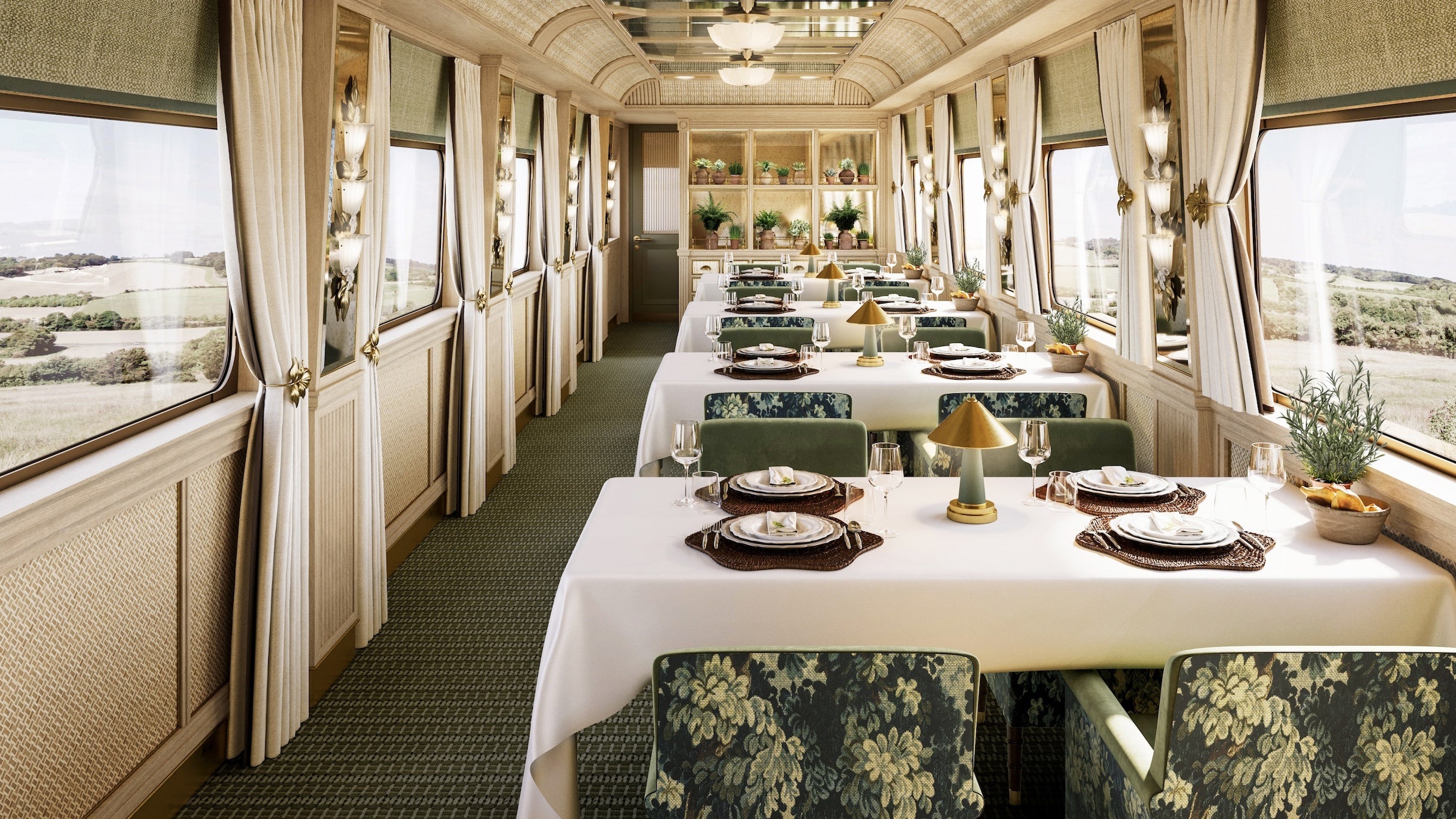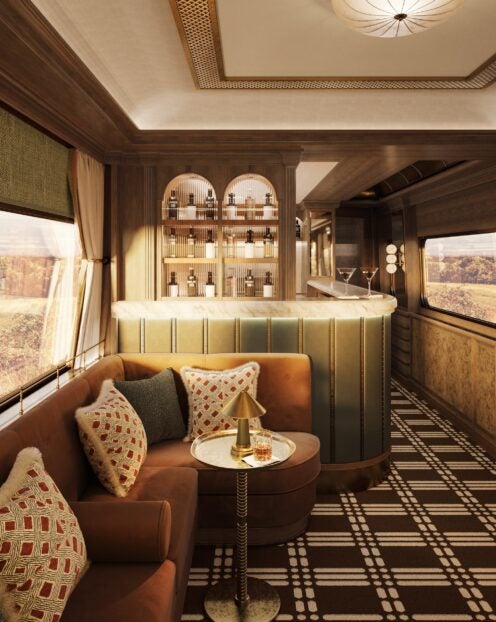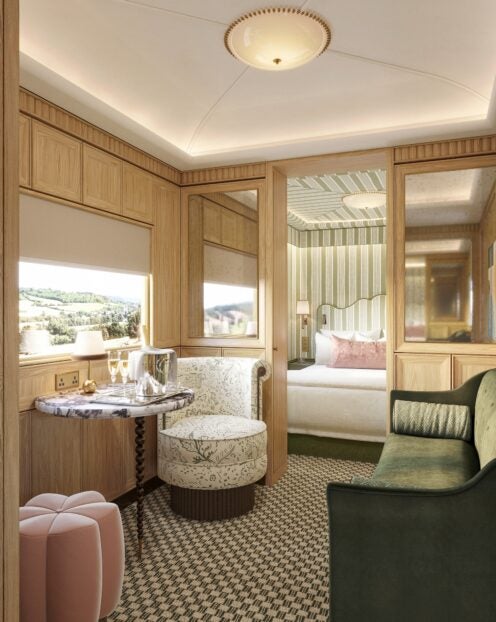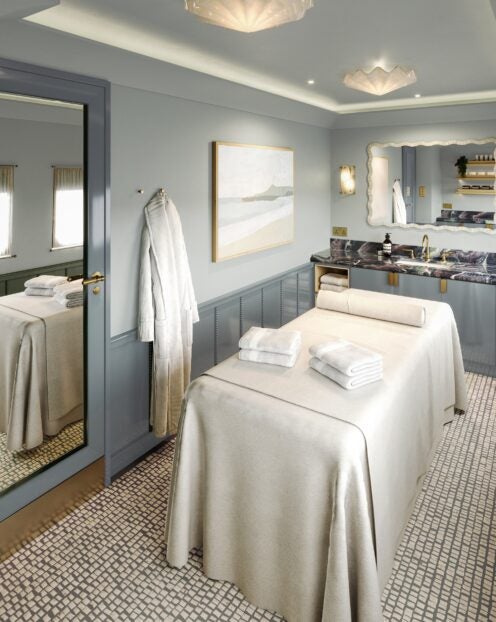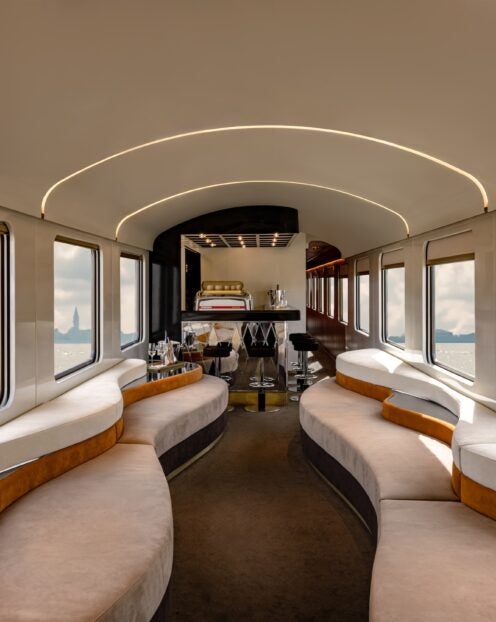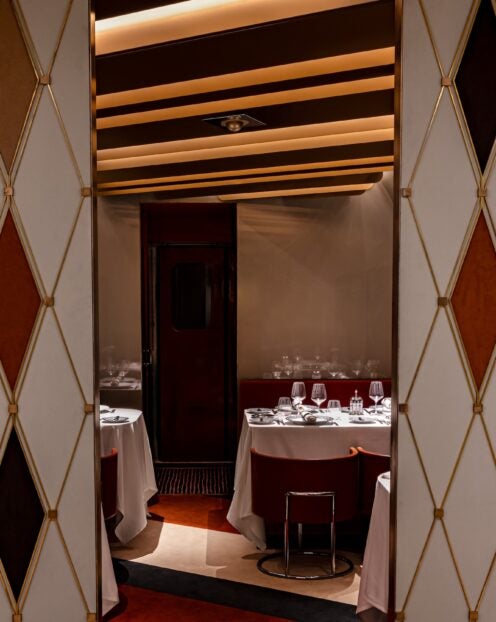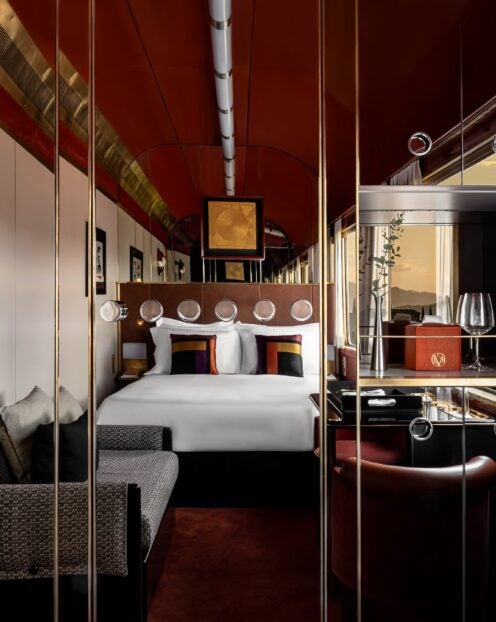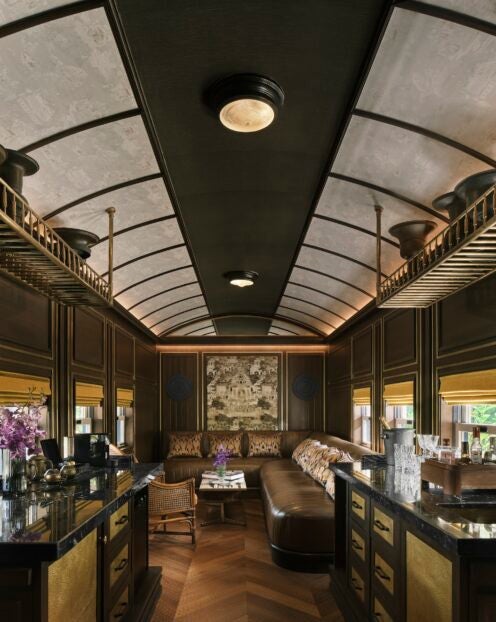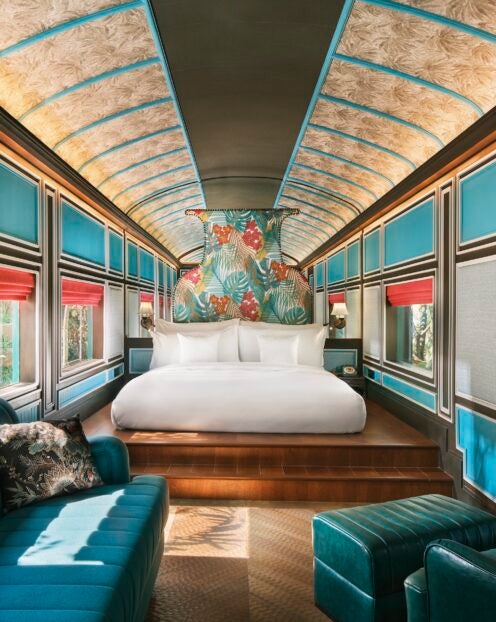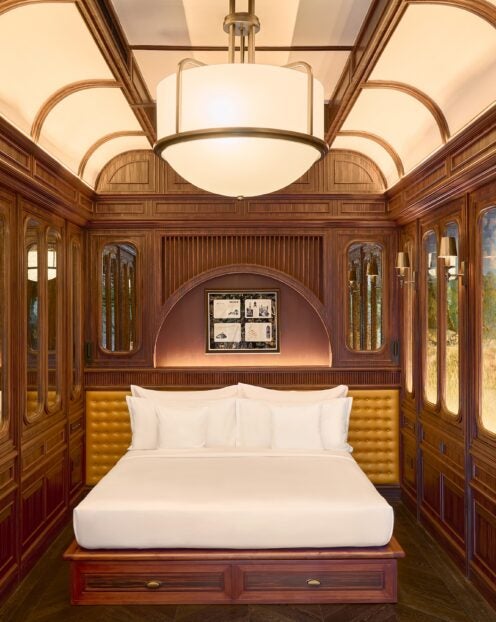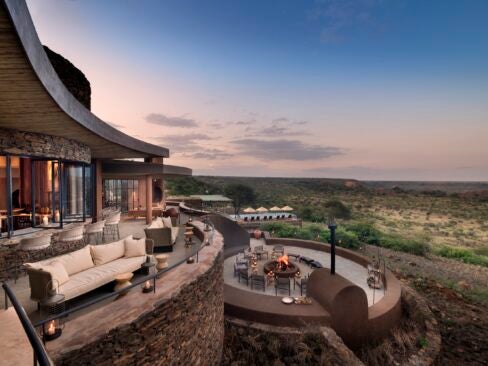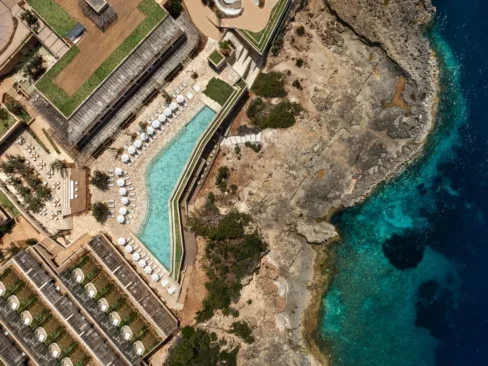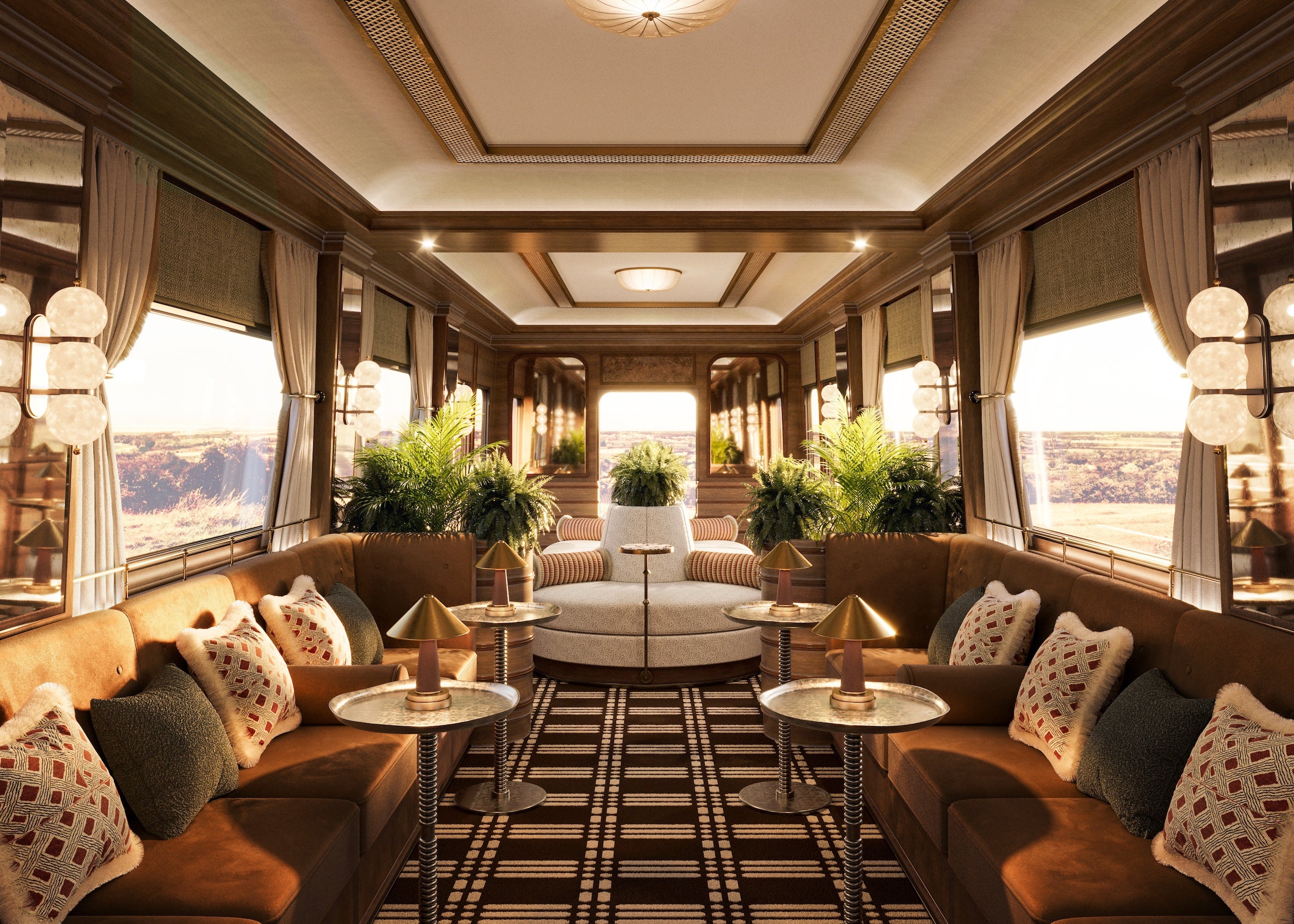
In the fall of 1883, Europe’s first transcontinental express service chugged its way along a 1,700-mile route from Paris to Constantinople. For that era’s moneyed and curious, this new era of luxury train travel offered by the new Express d’Orient service suddenly offered an effortless way to access a spread of Europe’s most enigmatic cities, with the promise of stops at the beer halls of Munich, ballrooms of Vienna, and spa waters of Budapest.
For many on board, though, the train itself was just as big a draw as the landscapes revealed beyond the window pane. This ‘rolling palace’ was unfathomably lavish, with plush sleeping chambers, mahogany-lined carriages, and white-glove dining experiences. Walking from one ritzy salon to another, privileged passengers might spot royalty or the day’s celebrities admiring the passing lakes and mountains from deep armchairs sheathed in the softest Spanish leather.
Of course, life has altered beyond all recognition in the 140 or so years since that maiden voyage – which is perhaps why there seems to be so much nostalgia for the unhurried romance and whimsy of that era. Around the world, a resurgence of interest in luxury train travel has precipitated the launch of ambitious new rail routes and hotel concepts that draw from the age-old allure of the locomotive.
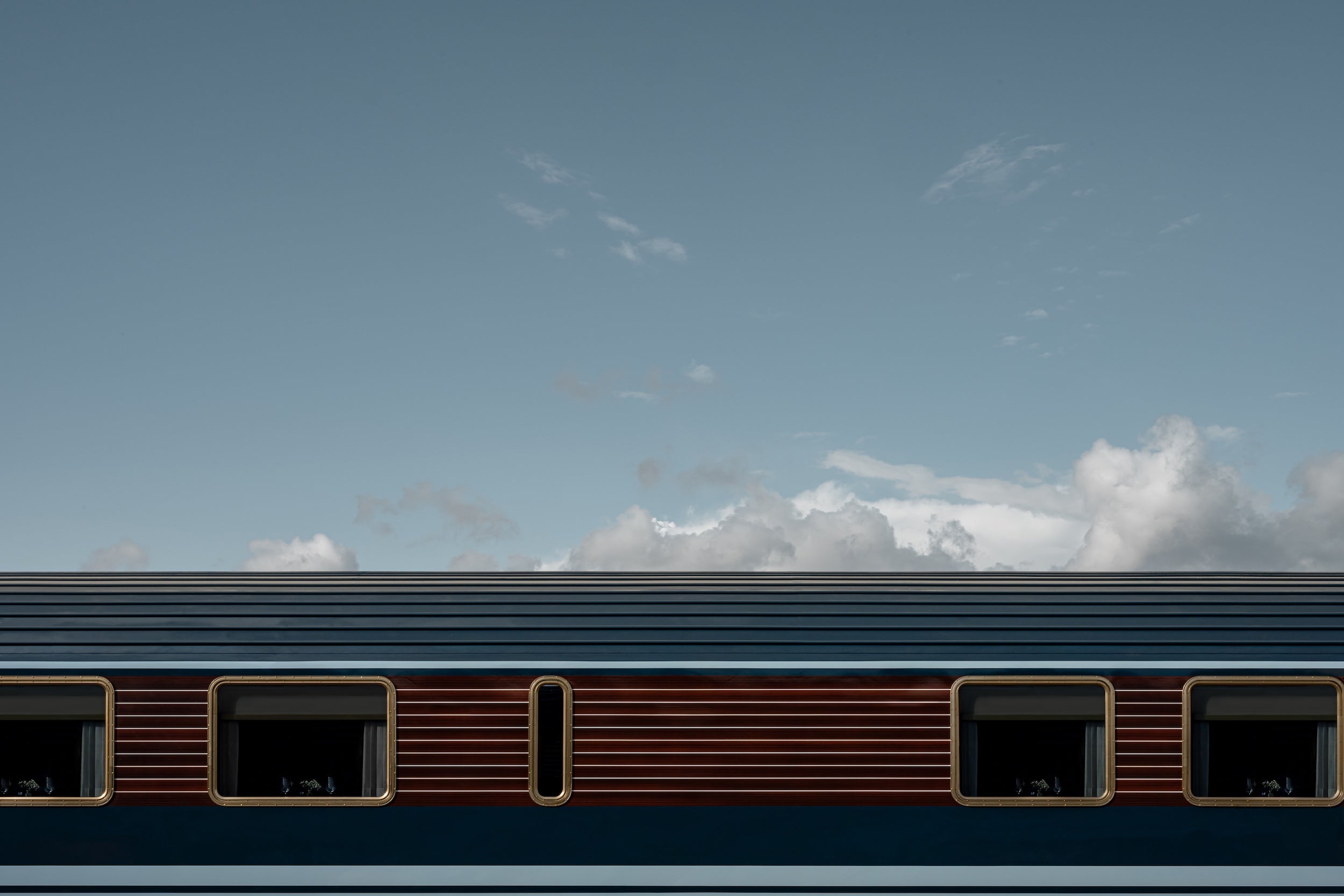
Newly created by the French hospitality behemoth Accor, the Orient Express hospitality brand makes its debut this spring with the launch of the La Dolce Vita Orient Express train. Initially offering eight leisurely itineraries across Italy, glossy carriages will accommodate a maximum of 62 passengers across 12 deluxe cabins and 18 suites. Interiors will be inspired by Italian design from the 1960s and ‘70s; regional menus will be overseen by chef Heinz Beck (of the three-Michelin-starred La Pergola); and live musicians will perform in the Players’ Lounge as guests compete in chess and backgammon.
Also in the spring, the first Orient Express hotel, La Minerva, will open in a 17th-century palace beside the Pantheon in Rome, with a Venice hotel joining it later in the year. Common throughout the growing portfolio will be sophisticated Art Deco-style interiors that reference classic train cars, Ottoman-inspired spa rituals, a ‘Wagon Bar’ cocktail venue, and a jovial approach to service, with team members paying homage to the conductors and porters who catered to VIPs aboard the original train.
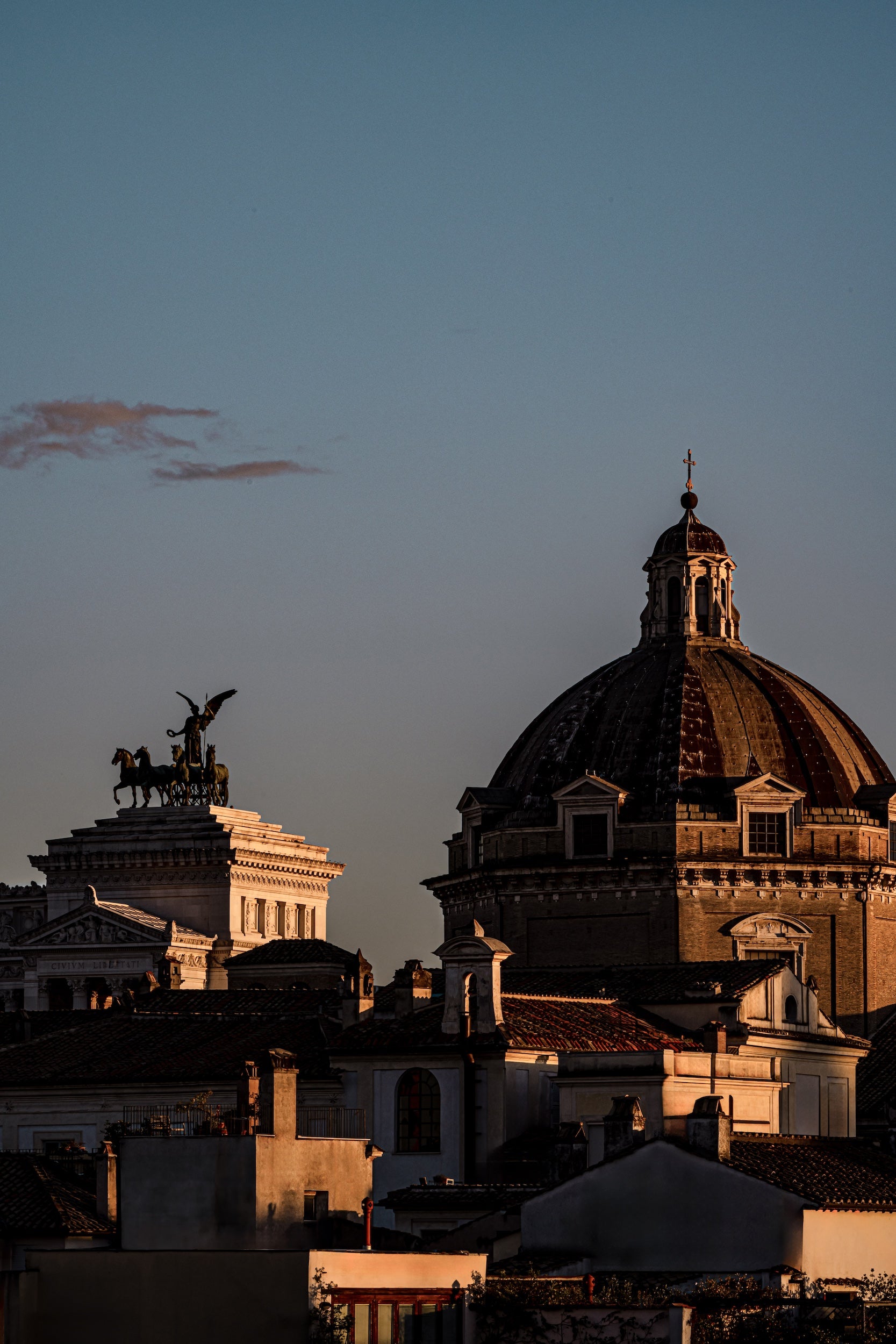
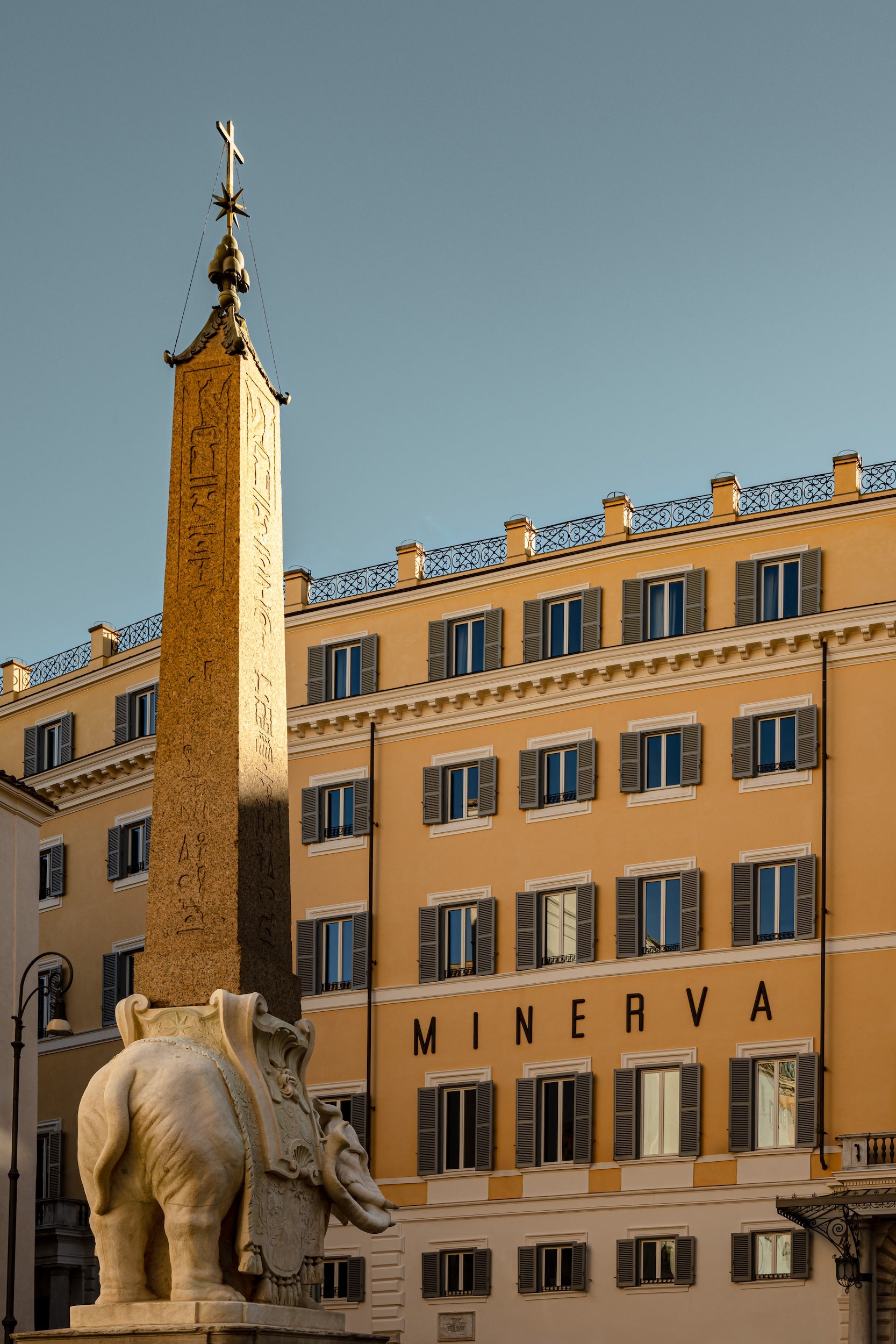
Somewhat confusingly, these new Orient Express services will run in competition with the long-standing Venice Simplon-Orient-Express train journeys operated by Belmond. That latter service has undergone a makeover of its own with the launch of its L’Observatoire carriage, conceived by the French artist JR and featuring a library with hundreds of titles, a tea room, and a bedroom. The world’s most expensive train car, it is ambitiously priced at about $100,000 per night.
In summer, Belmond will also introduce the first luxury sleeper train to travel through England and Wales with its new Britannic Explorer. Departing from London, its bucolic, multi-day itineraries might incorporate pit stops for wild swimming in the Lake District or breezy hikes through Welsh valleys, followed by lavish suppers overseen by chef Simon Rogan, whose longtime focus on sustainability and local produce chimes well with rail travel’s planet-positive credentials.
But new upmarket train journeys aren’t confined to Europe. Using restored vintage steamers, Vietnam’s Revolution Express will make daily return trips between Da Nang and the former royal capital, Hue, when it commences operations this year. As part of the country’s sweeping investment in luxury tourism, Saudi Arabia will inaugurate the Middle East’s first luxury rail services in 2026. Operating along an 808-mile route, the 34-suite Dream of the Desert will feature locally inspired interiors, with majlis-style reception lounges, hand-carved decorative details, and evocative artworks depicting remote Saudi landmarks and natural wonders.
The experience aboard Dream of the Desert will be unprecedented, but first-time visitors to Saudi Arabia may be surprised to learn the country’s association with rail travel stretches back well over a century. The newly opened Chedi Hegra resort in AlUla is located on the site of the old Hegra Railway station, which was founded in 1907 and was a stop on the Hajj route until the 1920s.
With its glass walls, brass accents, and private bedroom terraces illuminated by flickering firepits, the 35-key resort is the epitome of desert chic, though train lovers are typically most astounded by the Prima Classe, or ‘First Class,’ restaurant. Its cross-continental menu celebrates cuisine from cities like Venice and Cairo; its crowning decorative feature is an original 1906 Locomotive 964 train that crisscrossed the country in the early 20th century and was immaculately restored before being installed at the property.
About three hours from Bangkok, the InterContinental Khao Yai Resort shows you don’t need an authentic link to train travel to capitalize on its sense of adventure and beauty. When creating the resort, designer Bill Bensley conjured up a fictional conductor to serve as a figurative linchpin for his outlandish train-themed property on the borders of Thailand’s first national park.
The hotel reception resembles a railway station ticketing office; train-related trinkets and evocative old posters decorate Thai restaurant Somying’s Kitchen (supposedly named after the conductor’s mother); and, best of all, the resort’s candy-colored signature villas sit within salvaged rail carriages, featuring leafy private terraces with plunge pools and outdoor bathtubs.
By comparison, the rail revolution currently happening in Uzbekistan isn’t as madcap, but it does hark back to the palpable sense of excitement and discovery that defined the earliest train journeys. An expansion of the country’s high-speed rail network has made journeys between the Silk Road cities of Tashkent, Samarkand, and Bukhara as quick and easy as can be, and will be extended in the fall when upgraded links cut hours off the transit time between the capital and 2,500-year-old Khiva, where the golden-hued old town is a fabled open-air museum embellished with gleaming turquoise tiles and studded with minarets.
The route’s inauguration will be followed by the debut of Uzbekistan’s Samarkand Express in 2026. Another elevated train service accommodating up to 76 guests, it will shimmy between the country’s most magical historic sites and ancient cities.





